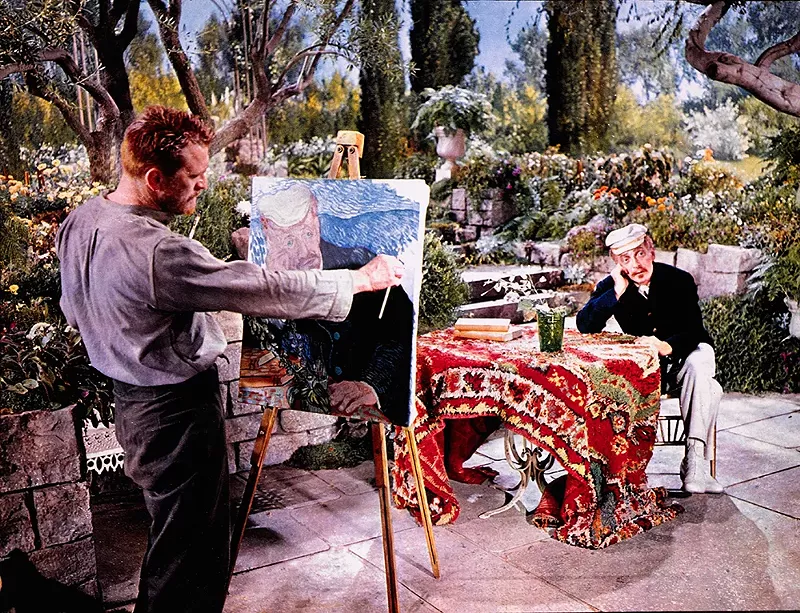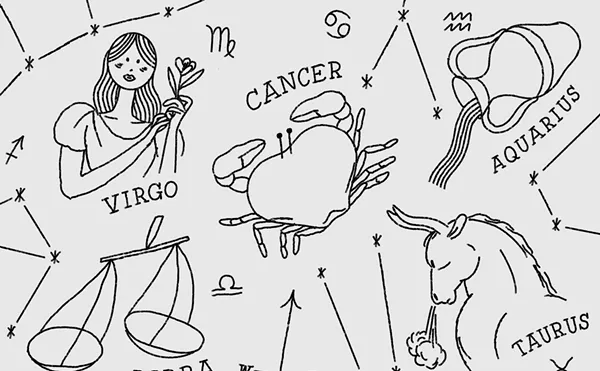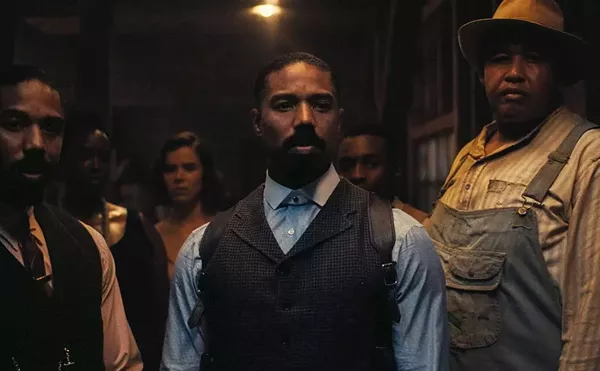‘Lust for Life’ paints Van Gogh — convincingly — as a realist
The 1956 Kirk Douglas-starring biopic screens Saturday at the DIA to coincide with its new ‘Van Gogh in America’ exhibition

Audio By Carbonatix
[
{
"name": "GPT - Leaderboard - Inline - Content",
"component": "35519556",
"insertPoint": "5th",
"startingPoint": "3",
"requiredCountToDisplay": "3",
"maxInsertions": 100,
"adList": [
{
"adPreset": "LeaderboardInline"
}
]
}
]

Screening in conjunction with the DIA’s Van Gogh in America exhibition, the 1956 biopic Lust for Life chronicles the artist’s entry and subsequent immersion into painting, and his notorious careening between solace and agony in the process. As directed by Vincente Minnelli, best known for bright technicolor musicals like Brigadoon and An American in Paris, Lust for Life moves from intense shadow to bright fields of color and light and back again, with a studiously controlled palette allowing Kirk Douglas’s jittery central performance to come to the fore. Depicting the Dutch painter less as a manic outsider artist but than as an emotionally sensitive social realist, its perspective on the man feels rare and welcome even now.
“Did you ever see a single man or woman at work?” Douglas’s Van Gogh asks early on of the paintings he sees around him, decrying the art world’s lack of attention to more terrestrial, working-class concerns. After finding inspiration in documenting working people after his failed efforts at ministering to coal miners early in his career, Van Gogh labors in precarity but with conviction, and against the grain of his peers. Framing the artist as pursuing a kind of subjectivized sensuality that grasps at fidelity to his and his subjects’ feelings, Minnelli depicts Van Gogh not as distorting reality but instead as honoring it through a kind of intimate proximity.
Douglas renders Van Gogh on some essential level as himself — and thus as a bit of a pistol, firm in his convictions, and endearingly defiant as ever. (His manner, it must be said, forecasts the position of plenty of other biopic film leads portraying brilliant figures underappreciated in their time). But Douglas also, especially when silent, allows his feelings to percolate in a way that largely stays internal, becoming visible anyway even when shot through the wide framings Minnelli tends to favor here and more generally. Scarce (for being carefully deployed) are the kinds of sensationalizing, dramatically shadowy closeups one might expect of Van Gogh all but tweaking, running hands over his hair or face to suggest ailing mental health. Instead, Minnelli’s film lives largely in a more open, carefully studied space resembling the artist’s plein air paintings, cultivating alignment with the artist via a shared perspective instead of imposing more forced varieties of intimacy. Photographing holdings of Van Gogh’s work from a staggering array of museums around the globe (including the DIA), Minnelli allows them to pepper the film’s structure as part of this, too — and without furnishing them with coy origin stories.
The film’s form largely follows the artist’s halting career progress, tracing the increasingly florid (and eventually distressing) path of the scenes he’s taking in and putting to canvas. The progression proves both natural and engaging, promising a sequence of fine things — call it a string of pearls — with an emotional thread running through them. But there’s a tension running through it, too: one that Douglas, in bright yet ominous bursts of enthusiasm, provides despite the internalized bent of the performance. Through it, even as Lust centers on the arguably mundane — conversations around art and its presentation, both modest and splashy exhibitions, and many scenes of painting in meadows — the film retains a carefully deployed sort of charge.
This sensation is amplified through Van Gogh’s intermittent collisions with peers. Lecturing his dear, far more peaceable friend Paul Gauguin (Anthony Quinn) over their differences in priorities and taste, temperamental flares emerge. Knowing that we as self-selecting viewers know the grim places the film must go, Minnelli has the sense to not play up the events of its story — really, of Van Gogh’s life story — with the kind of emphasis on suspense a lesser director might. Instead, his touch is often musing and meditative, reflecting upon indoor and outdoor painting in a manner that plainly mirrors filmic concerns around studio versus location-based shooting. When Van Gogh accuses Gauguin of painting “too flat,” he means it both visually and emotionally, arguing that Gauguin is failing to capture some essential dimension of both the look and feeling of the world. In pitching Van Gogh’s fixation on close intimacy with what he sees as compulsive, invigorating, and overwhelming, Minnelli’s work admits some modest self-reflection on his craft. So, too, does he do this in retaining Gauguin’s subsequent suggestion: that Van Gogh’s technique is ultimately alienated from his subjects and ultimately secondhand, inadequate to capturing the experience of real life (as lived, say, by laborers). In welcoming these conflicting viewpoints, Minnelli nods to the fact that in terms of artistic production — and what ultimately makes a work sing — differing methods and the personalities that produce them must necessarily sit alongside one another without easy explanation.
Often, Lust for Life — like most films, really — embodies the criticisms these two artists level at one another. In places, it can feel touristic, sweeping through pastoral rural European settings and a kind of context-rich museum tour, too — both in a space of just two hours. Likewise, it can feel — as Minnelli’s POV-light, wide-angle shooting style suggests — some degree of distance from its protagonist, not presuming to inhabit or exactly evoke the workings of Van Gogh’s mind. But in so many cases, assuming that kind of intimacy on the part of a filmmaker can be a type of obscene presumption, one typical of biopics — and so here it feels more than right to leave that work to Douglas. And it’s precisely that kind of measure and reserve that makes Minnelli a realist artist himself — albeit a realist of a different kind.
Lust for Life screens at 2 p.m. on Saturday, Oct. 8 at the Detroit Film Theatre; 5200 Woodward Ave., Detroit; 313-833-7900; dia.org. Tickets are $9.50.
Stay connected with Detroit Metro Times. Subscribe to our newsletters, and follow us on Google News, Apple News, Twitter, Facebook, Instagram, Reddit, or TikTok.





